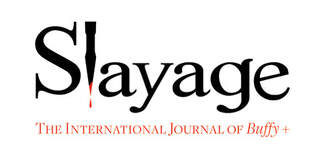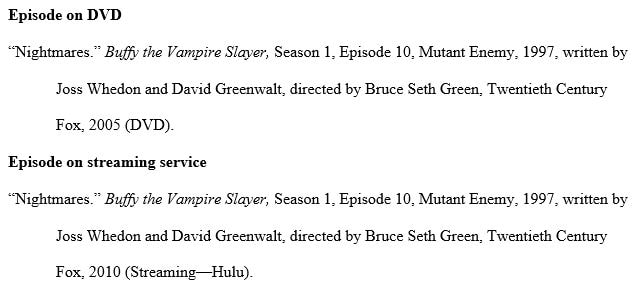ISSN 1546-9212
Slayage House Style Sheet
- Avoid self-referential comments (e.g. “I will show”) whenever possible.
- Avoid contractions unless doing so forces you to be noticeably non-idiomatic or unless you have some other overriding rhetorical purpose.
- Use italics rather than underlining.
- After the first mention of the title of any television series, film, album, or novel (etc.), give the years in parentheses; e.g., Buffy the Vampire Slayer (1997-2003).
- Indicate the title, season, and episode number for each episode from which you quote or give specific details, e.g. (“Prophecy Girl” 1.12). You may omit such a citation if you indicate the citation within the body of a sentence—for example: In “Prophecy Girl,” the twelfth and last episode of the first season, the Slayer briefly dies.
- For any television episode or film that you discuss in detail or from which you quote, also give a full bibliographic citation including the name of the writer(s) and director. (See below.)
- Use MLA. If your discipline justifies it, you may with the editor’s permission use another documentation system, but since we are indexed in MLA, we prefer MLA (with the exceptions indicated herein). If you use another documentation system, identify it and explain your reasoning in a cover letter.
- As of 2017, no matter what documentation system is used, in Slayage, quotations from television episodes, films, etc., must be provided with a time stamp—hour, minute, and second (e.g. 00:21:32-38 for a line occurring in the twenty-first minute between the 32nd and 38th seconds).
- If you cite from a Kindle or similar device, try using the “Go To” function to deduce page information for your citations.
- Subheadings get one line blank above, no extra lines after (except when there is an epigraph); bold but not all caps. Center.
- Sub-subheadings are NOT bold and not centered; they should be italicized and placed at left.
- For the bibliography, use the “hanging indent” (under “format” > “paragraph” > “special”); do not use tabs. Do not space between bibliography entries.
- For indented quotations, use a margin change of half an inch; do not use the tab bar, and do not hit return at the end of each line of the indented quote.
- Make sure that there is only one space after the period ending each sentence, not two spaces.
- Avoid straight quotation marks; use curved ones.
- Use the solid long dash rather than two hyphens (see next item for an example), and do not put a space before or after the dash.
- We use the Oxford comma (tall, dark, and handsome—not tall, dark and handsome).
- Capitalize certain terms that have specific meaning in these texts—e.g. Slayer, Doll.
Below is a minimal example for an episode citation from a DVD and one from a streaming service. Depending on the emphases of the article, other information (such as names of performers) could be included.
Slayage (ISSN 1546-9212) is an open-access, anonymized peer-reviewed, MLA-indexed publication and a member of the Directory of Open Access Journals. All content is available at no cost, in downloadable, full-text PDFs. There is no submission or publication fee for authors.

